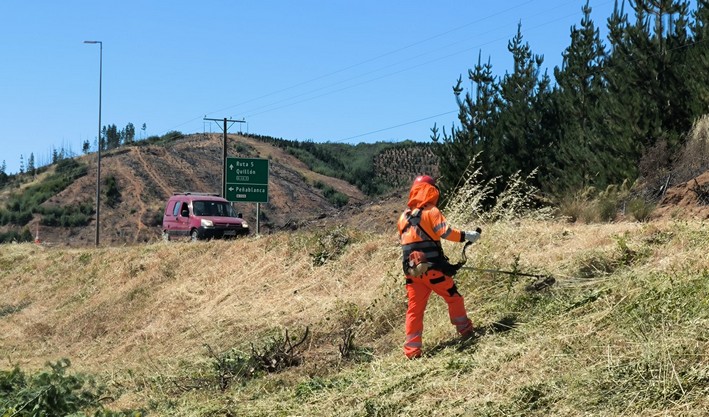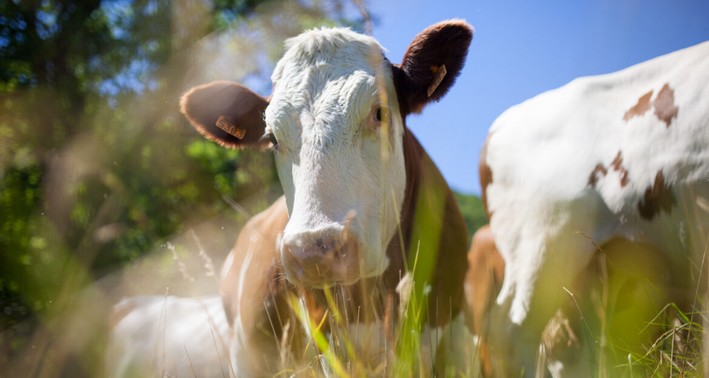Who Pays for the Forest's Ecosystem Services?
A study by the University of La Frontera, funded by the Native Forest Research Fund (FIBN), estimated the economic value of forest ecosystem services in La Araucanía using the "opportunity cost of conservation" method, widely employed globally in Reducing Emissions from Deforestation and Forest Degradation (REDD+) programs. Estimating this value is key to designing policies that revalue and increase the profitability of native forests, such as payments to native forest producers through conservation easements (via subsidies) or Payment for Ecosystem Services (via private payments).
It is well known that native forests produce ecosystem goods and services, and their owners could enhance this production if given economic incentives. Conversely, without such incentives, the necessary conditions for owners to protect forests from degradation are not met.
While very few forest goods and services have market value—except for timber, firewood, or some forest fruits—they hold value for society as public goods. Unfortunately, society is not always willing to acknowledge this value for those who produce them, so the state must step in through subsidies or grants. However, when budgets are insufficient to cover the entire country, the solution is to design programs more focused on specific and localized environmental objectives.
Dr. Ricardo González, professor of Environmental and Natural Resource Economics at the Department of Forest Sciences at the University of La Frontera, explains that "to focus on these objectives, there are two relatively new instruments in nature conservation, both in Chile and globally, though they have been successfully tested for decades in the United States and some Latin American countries like Costa Rica, Mexico, or Ecuador. Unfortunately, Chile lags in their implementation."
The first instrument mentioned by Dr. González is the Payment for Ecosystem Services (PES) scheme, which involves conservation contracts where users of these services agree to pay producers economic compensation proportional to the services provided. Payments are generally agreed upon privately and correspond to the quantity and quality of the environmental service involved. "An example is drinking water users in a locality agreeing to pay native forest owners for water production. These systems involve three actors: the payers (buyers), an intermediary entity collecting and distributing payments (e.g., a water company or a dedicated institution), and the service producers (owners receiving payment). The intermediary and guarantor could be the water company combined with a forest fund, like Costa Rica’s Forest Financing Fund (FONAFIFO). In PES schemes, both users and producers are clearly identified and enter agreements voluntarily," explains the academic.
The other instrument is Conservation Easement contracts, used when consumers of environmental goods and services cannot be identified, such as for biodiversity conservation, scenic beauty, or protecting wildlife habitats. "In these cases, since the beneficiaries are society as a whole, a PES mechanism cannot be established. Instead, the state acts on behalf of beneficiaries in conservation payment contracts. Here, the state, through policies prioritizing local environmental services, can contract private owners to produce certain priority services. For example, conserving a specific forest type or protecting a threatened wildlife species in a designated area," explains Professor González.
Thus, both schemes recognize the economic value of ecosystem services produced by native forests.
The Opportunity Cost of Conservation
In the 2020-2021 study on native forest ecosystem services in La Araucanía, led by Dr. Ricardo González and funded by FIBN, the opportunity cost of conservation faced by native forest owners was analyzed. This cost represents the monetary benefits owners forgo when choosing conservation and, "since conservation is voluntary, this cost equals their willingness to pay (WTP) to preserve their native forest."
The study gathered owner-level data through surveys, assessing socioeconomic conditions, conservation opportunity costs, and land-use preferences. It identified ecosystem services recognized "from the owners' perspective" and their economic valuation, revealed through land-use decisions.
Opportunity costs were calculated by land-use class, owner type, slope, and altitude. Results showed native forests are less profitable than agricultural, livestock, or forestry uses, except on non-productive soils.
Higher-quality sites with high conservation opportunity costs had lower conservation probabilities due to more profitable alternative uses.
Lower-quality sites had lower opportunity costs but remained relevant for decisions on firewood, charcoal, or livestock grazing. Subsistence and semi-subsistence owners bore these costs. Dr. González notes, "It’s controversial that poor families shoulder conservation costs while society enjoys benefits without compensation. Payments could relieve income pressures that drive forest degradation."
Families with alternative incomes (e.g., pensions) could better absorb conservation costs. Higher-income households were more likely to conserve, whereas survival-driven use worsened conservation issues. "No owner should face choosing between livestock grazing or conservation," emphasizes Dr. González.
The study’s opportunity cost estimation highlights a market failure in native forests, addressable through owner compensation. "Payments should vary by owner type and apply to all fulfilling pre-agreed conservation contracts."
Implementing conservation contracts would simultaneously incentivize conservation and alleviate rural poverty, improving wealth distribution. "Impoverished peasants shouldn’t bear conservation costs alone. Society must share this responsibility," argues the researcher.
PES and conservation easements offer periodic (e.g., annual) payments, unlike Chile’s one-time schemes. This ensures sustained compensation for continuous service provision, efficiently addressing market failures.
Legal reforms are needed for PES implementation, such as a new Forest Promotion Law incorporating conservation incentives. Creating environmental funds (e.g., the promised Forest Environmental Fund, FFA) or expanding the Native Forest Conservation Fund (FCBN) could facilitate payments.
Dr. González states, "PES and conservation easements remain distant without institutional adjustments and dedicated public entities." He adds, "The 2016 Conservation Real Right Law (DRC) allows private contracts but lacks a fiduciary entity to enforce them. The FCBN or a nonprofit could fill this gap. Until then, only private PES or voluntary DRC projects will exist."
Study Reference:
González, R. et al. (2021) "Identification, Quantification, and Valuation of Environmental Services Provided by Native Forests in Southern Chile." FINAL REPORT FIBN PROJECT 078/2012. October 29, 2021. 198 p.

















